Within an area occupied by the states of North Carolina, Virginia, West Virginia, Maryland, Delaware, and New Jersey is located the Coast Guard’s Fifth District. It is perhaps the most historic district within the Coast Guard having witnessed the service’s founding and much of its early history.
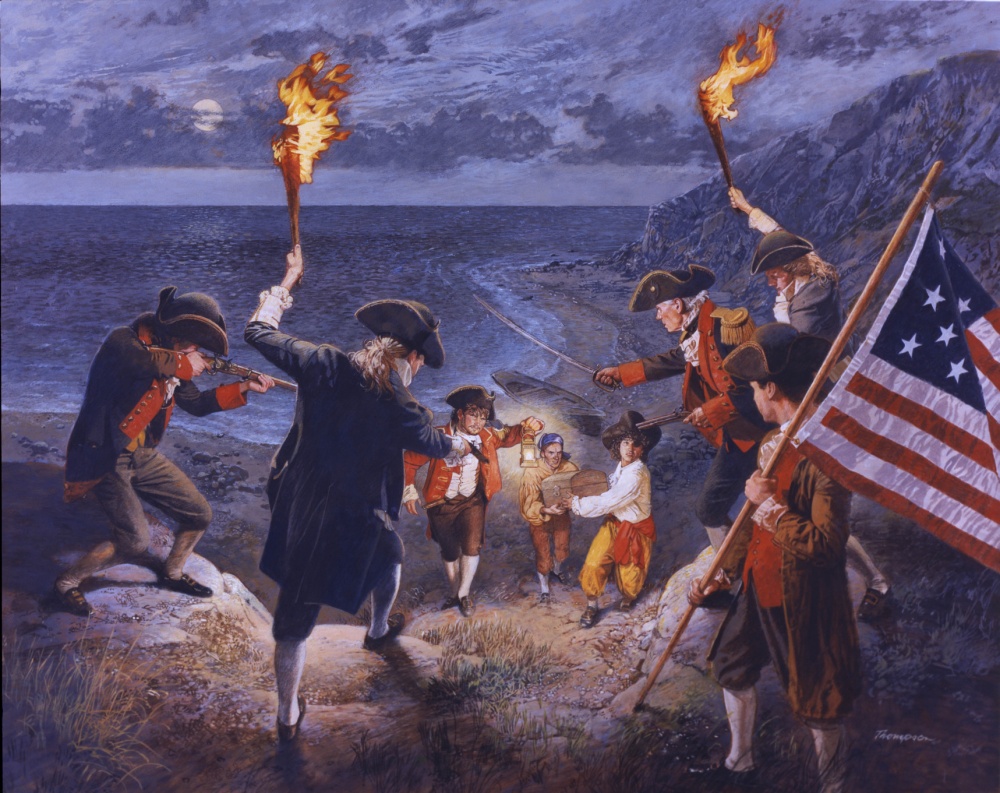 Coast Guard men, women and assets associated with the Fifth District began playing a vital role in Coast Guard history the year the Constitution was signed. An act passed by Congress in Philadelphia in 1789 established the U.S. Lighthouse Service, a predecessor agency of the modern Coast Guard. Many Lighthouse Service firsts were recorded in the Fifth District region, including the Cape Henry Lighthouse, of 1793, the first federally funded works project authorized by President George Washington and overseen by Treasury Secretary Alexander Hamilton. In addition, the first lightship in service history was placed near Norfolk, Virginia, in 1820, and the tallest lighthouse in the United States erected at Cape Hatteras in 1870.
Coast Guard men, women and assets associated with the Fifth District began playing a vital role in Coast Guard history the year the Constitution was signed. An act passed by Congress in Philadelphia in 1789 established the U.S. Lighthouse Service, a predecessor agency of the modern Coast Guard. Many Lighthouse Service firsts were recorded in the Fifth District region, including the Cape Henry Lighthouse, of 1793, the first federally funded works project authorized by President George Washington and overseen by Treasury Secretary Alexander Hamilton. In addition, the first lightship in service history was placed near Norfolk, Virginia, in 1820, and the tallest lighthouse in the United States erected at Cape Hatteras in 1870.
The Coast Guard’s official founding took place within the district’s modern boundaries. In Philadelphia, Congress passed Alexander Hamilton’s plan to establish a fleet of revenue cutters, which formed the basis for the Revenue Cutter Service. Four of the original 10 revenue cutters were based in the region later known as District 5, including cutters General Greene (Philadelphia), Active (Baltimore), Virginia (Norfolk) and Diligence (Wilmington, North Carolina). Since the 1700s, these cutters and dozens of others have been built at 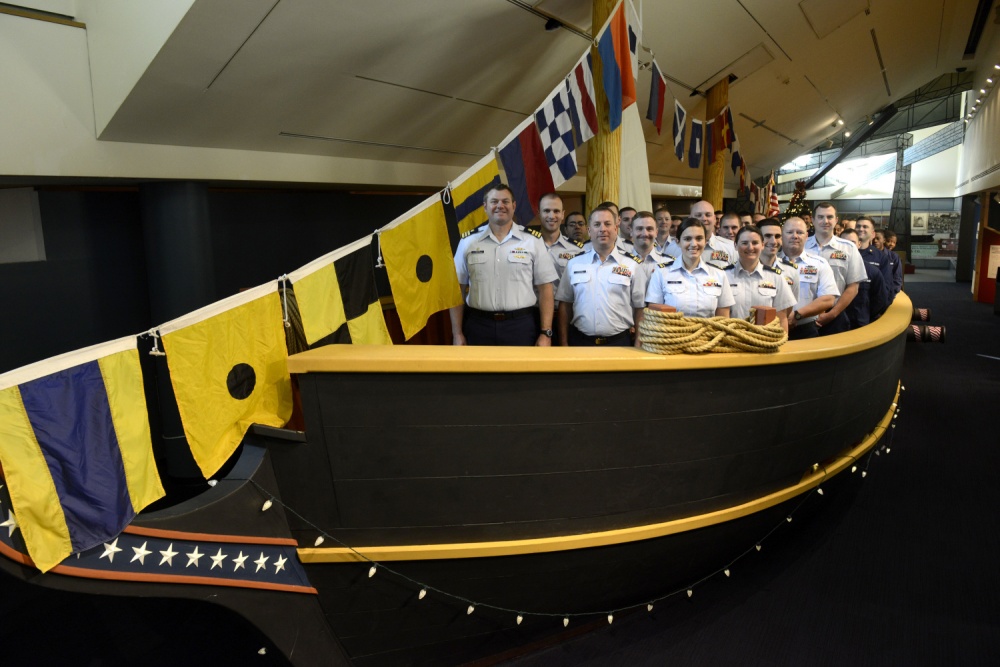 shipyards located in the Fifth District, including Philadelphia; Baltimore; Camden, New Jersey; Wilmington, Delaware; Norfolk, Virginia; and the Coast Guard Yard in Baltimore.
shipyards located in the Fifth District, including Philadelphia; Baltimore; Camden, New Jersey; Wilmington, Delaware; Norfolk, Virginia; and the Coast Guard Yard in Baltimore.
Coast Guard members and assets from the Fifth District region have served in every major conflict. In 1798, four revenue cutters that fought in the Quasi War with France were built or homeported in the District 5 region. One of the four, Diligence II, was stationed first in New Bern then in Wilmington, North Carolina. It became one of the first United States warships to engage a foreign enemy. In 1798, this cutter saw combat action against French privateers in the Caribbean and was one of six cutters to bear this honored cutter name. Today, a full-size replica of Diligence II is on display in Philadelphia’s Independence Seaport Museum and within a few years, a new Offshore Patrol Cutter will become the seventh cutter to bear the name and carry-on the “Diligence” tradition.
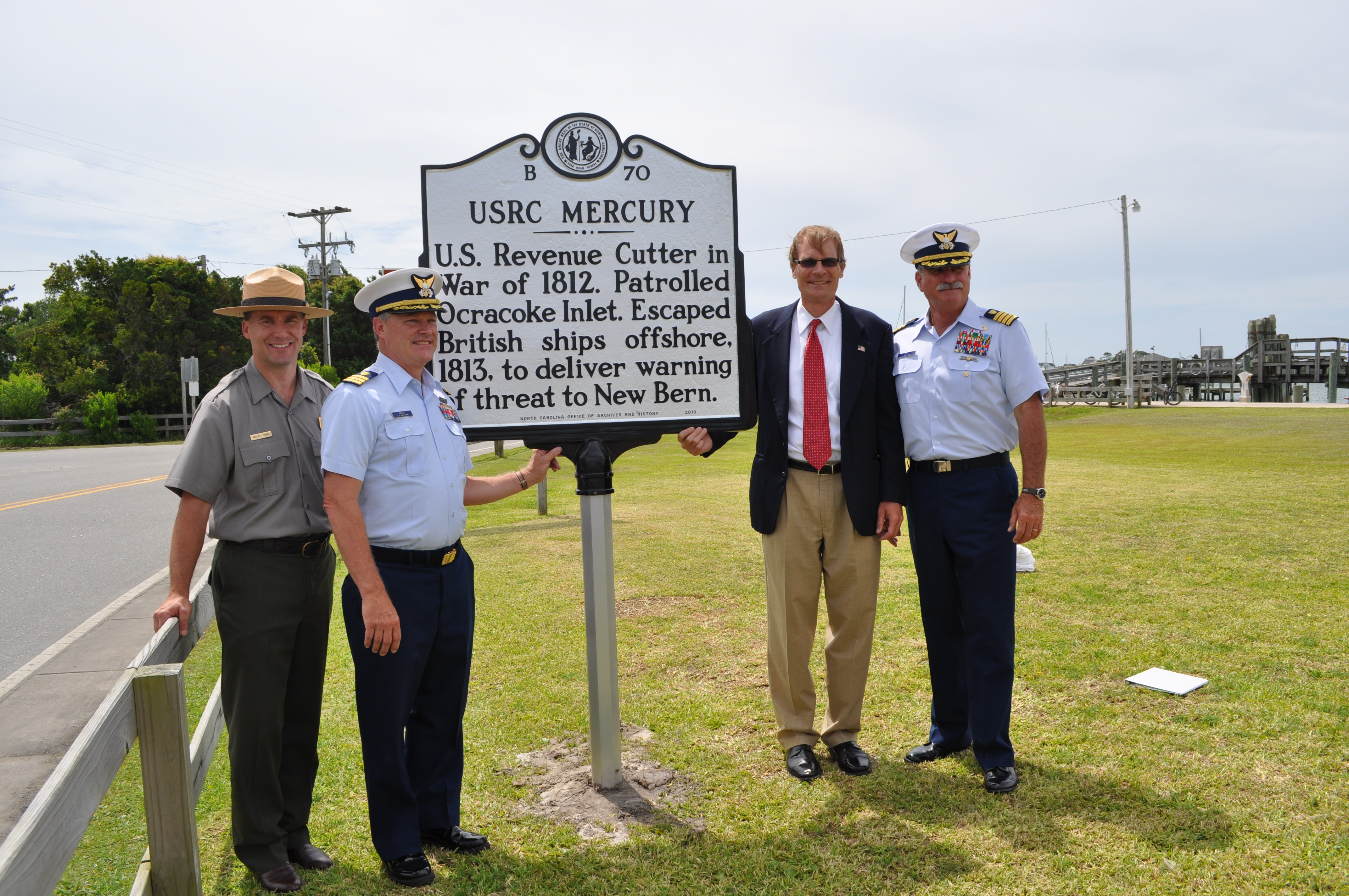 During the War of 1812, various cutters within the Fifth District region battled warships of the Royal Navy. In June 1812, Norfolk revenue cutter Thomas Jefferson made the first capture of the war, British schooner Patriot bound to Halifax with a cargo of sugar. In 1813, Cutter Mercury escaped Royal Navy forces and forewarned the city of New Bern, North Carolina, about an impending attack. Mercury’s warning allowed regular and militia forces to assemble for the city’s defense helping prevent British troops landing and the city’s destruction. In 1813, some of the first Coast Guard prisoners of war (POW) were captured by the Royal navy off the Cutter Surveyor at the Battle of Gloucester Point near Yorktown, Virginia.
During the War of 1812, various cutters within the Fifth District region battled warships of the Royal Navy. In June 1812, Norfolk revenue cutter Thomas Jefferson made the first capture of the war, British schooner Patriot bound to Halifax with a cargo of sugar. In 1813, Cutter Mercury escaped Royal Navy forces and forewarned the city of New Bern, North Carolina, about an impending attack. Mercury’s warning allowed regular and militia forces to assemble for the city’s defense helping prevent British troops landing and the city’s destruction. In 1813, some of the first Coast Guard prisoners of war (POW) were captured by the Royal navy off the Cutter Surveyor at the Battle of Gloucester Point near Yorktown, Virginia.
In 1848, Congress passed legislation that led to the establishment of the U.S. Life-Saving Service. The first lifesaving stations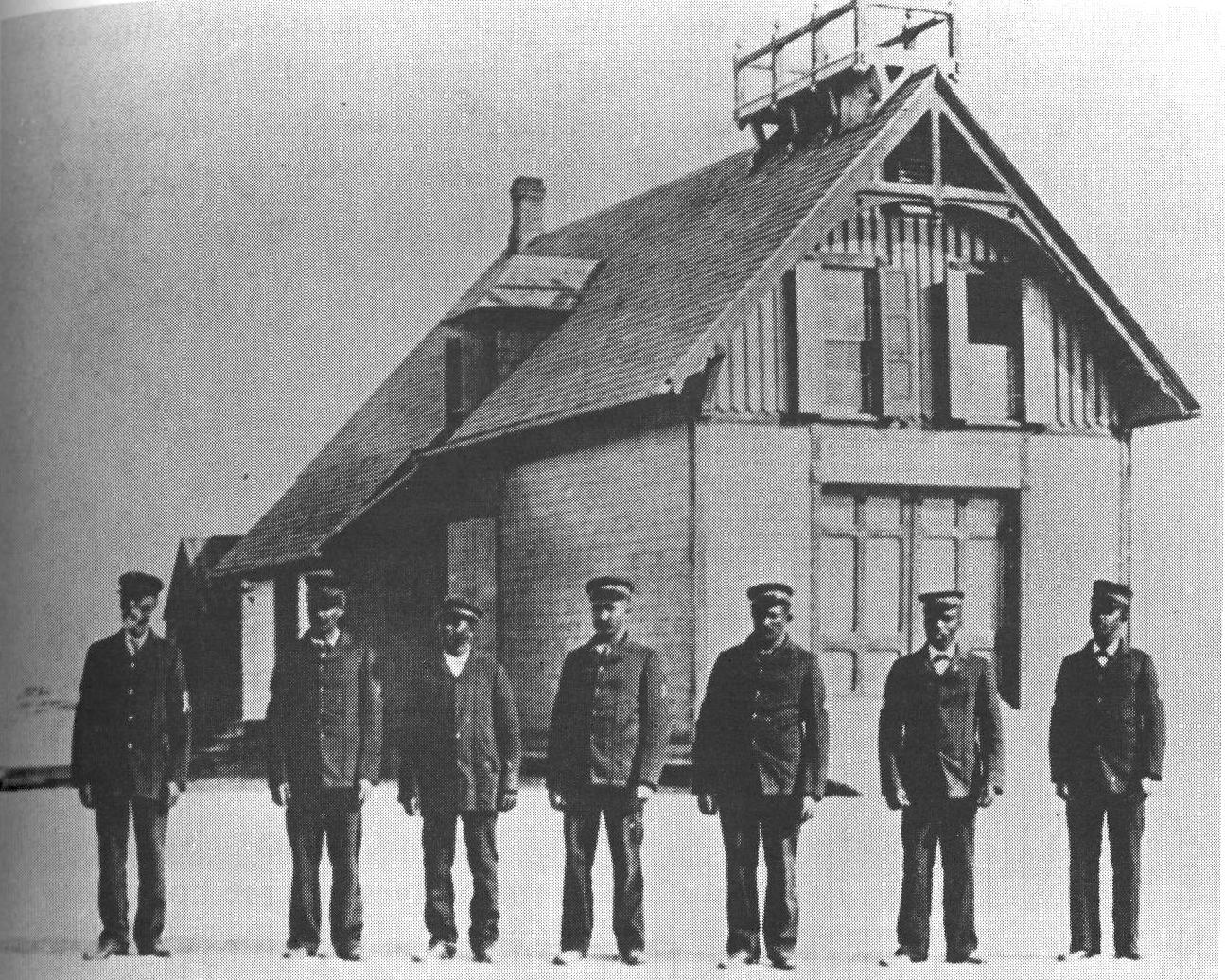 were placed along the New Jersey shore in the late 1840s. Later, the Lifesaving Service oversaw three districts in what became the Fifth District --one for New Jersey, one for the Chesapeake Bay and Eastern Shore, and one for the Southeast Virginia and North Carolina coastlines. Many notable families have been associated with lifesaving in the Fifth District, including the Burrus’s, Balances, Grays, O’Neals, and Daniels’s, while others have cutter namesake members such as Bailey Barco, Benjamin Dailey and Richard Etheridge.
were placed along the New Jersey shore in the late 1840s. Later, the Lifesaving Service oversaw three districts in what became the Fifth District --one for New Jersey, one for the Chesapeake Bay and Eastern Shore, and one for the Southeast Virginia and North Carolina coastlines. Many notable families have been associated with lifesaving in the Fifth District, including the Burrus’s, Balances, Grays, O’Neals, and Daniels’s, while others have cutter namesake members such as Bailey Barco, Benjamin Dailey and Richard Etheridge.
During the Civil War, the nation’s first and only presidential command vessel, Revenue Cutter Miami, steamed under President Abraham Lincoln. In 1861, he oversaw the amphibious landing of Union troops that re-captured Norfolk, Virginia. The year 1861 also saw Revenue Cutter Service gunboat Naugatuck engage the Confederate ironclad CSS Virginia in Hampton Roads, Virginia, shortly before the famous ironclad was scuttled and burned by its crew in the James River.
Women from the Fifth District blazed a trail in U.S. history while serving in Coast Guard predecessor services. Beginning in the 1820s, women began serving as lighthouse 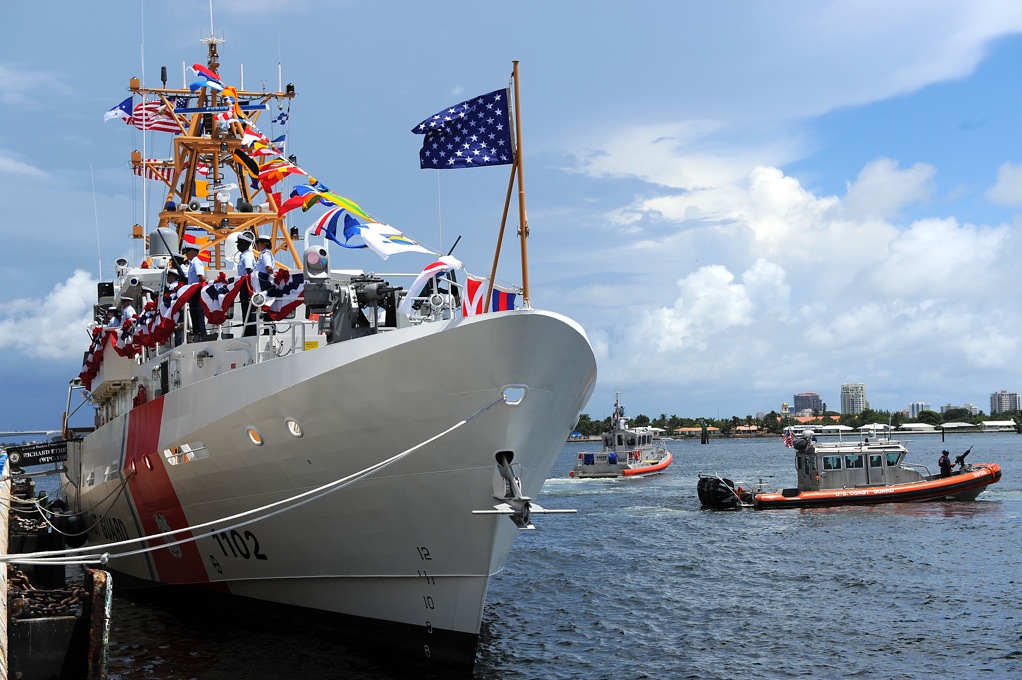 keepers around the Chesapeake Bay. They were the first women in U.S. history to oversee federal installations. In 1858, the revenue cutter Harriet Lane became the first cutter to bear a woman’s name and its namesake was the first First Lady who also hailed from the Fifth District. In 1861, the famed cutter Harriet Lane spearheaded the capture of forts guarding the entrance to Hatteras Inlet, North Carolina. After an artillery bombardment from the cutter’s guns, Confederate forces coined the term being “harriet laned.”
keepers around the Chesapeake Bay. They were the first women in U.S. history to oversee federal installations. In 1858, the revenue cutter Harriet Lane became the first cutter to bear a woman’s name and its namesake was the first First Lady who also hailed from the Fifth District. In 1861, the famed cutter Harriet Lane spearheaded the capture of forts guarding the entrance to Hatteras Inlet, North Carolina. After an artillery bombardment from the cutter’s guns, Confederate forces coined the term being “harriet laned.”
The Fifth District also boasts many minority trailblazers. In the early 1850s, lightships in North Carolina and Virginia had black caretakers ranging in age from 12 to 14 years, making them the youngest overseers of federal vessels in U.S. history. After the Civil War, African Americans were appointed as lighthouse keepers on Chesapeake Bay. In 1876, Surfman Jeremiah Munden died in 1876, when the Jones Hill (North Carolina) Lifesaving Station crew was lost in a rescue attempt. He was the first African American surfman to die in the line of duty. And, in 1880, African American Richard Etheridge was appointed keeper at the Pea Island Lifesaving Station. These men were the first African Americans in U.S. history to oversee federal installations.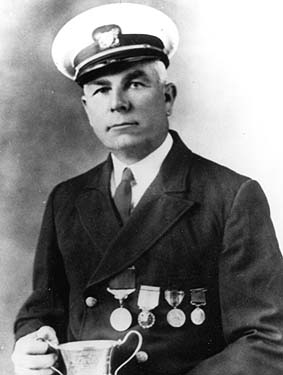
After the formation of the modern Coast Guard, minorities within the Fifth District continued to break barriers. In 1938, Chippewa Tribe member and chief radioman, Howard Kischassey, took charge of the Coast Guard radio station located at Dam Neck, Virginia, becoming the first Native American officer-in-charge of a Coast Guard station. In 1922, African American boatswain George Pruden advanced to chief petty officer and took charge of the Pea Island Lifesaving Station that same year. Pruden was the Coast Guard’s first minority chief petty officer.
In 1915, just before U.S. entered World War I, the Lifesaving Service and Revenue Cutter Service merged to form the Coast Guard. The new military service adopted a hybrid of the Lifesaving Service system with the forerunner of the Fifth District , the “Norfolk Division,” encompassing much of the territory currently overseen by the Fifth District. In World War I, Coast Guard bases, installations, and assets with in the district kept watch day and night. In 1918, the service lost the Diamond Shoals Lightship to U-boat attack off the North Carolina coast. That same year, not far away, Keeper John Midgett’s heroic surfmen saved the crew of torpedoed tanker Mirlo after it went up in flames.
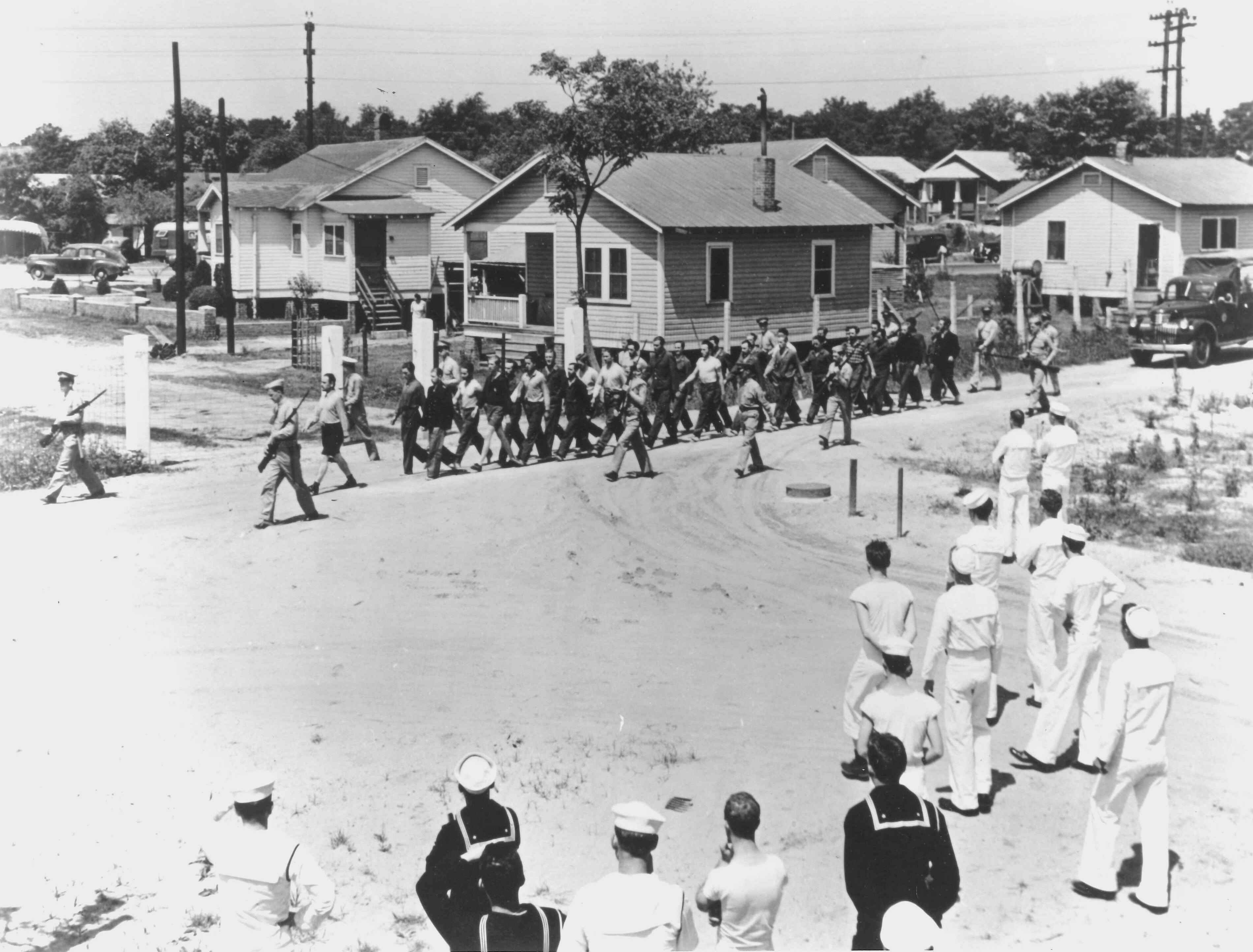 During World War II, the Coast Guard was transferred from the Treasury Department to the Navy and it adopted the Navy’s district system, which it has retained ever since. During the war, cutters battled Nazi submarines in an area off the North Carolina Coast termed “Torpedo Junction.” Chincoteague, Virginia, native and mustang officer, Maurice Jester, commanded the Coast Guard Cutter Icarus in the sinking of U-352 off the Outer Banks of North Carolina. This historic event resulted in the war’s second U-boat sinking by U.S. forces, first U.S. capture of German combatants and a Navy Cross Medal awarded to Jester.
During World War II, the Coast Guard was transferred from the Treasury Department to the Navy and it adopted the Navy’s district system, which it has retained ever since. During the war, cutters battled Nazi submarines in an area off the North Carolina Coast termed “Torpedo Junction.” Chincoteague, Virginia, native and mustang officer, Maurice Jester, commanded the Coast Guard Cutter Icarus in the sinking of U-352 off the Outer Banks of North Carolina. This historic event resulted in the war’s second U-boat sinking by U.S. forces, first U.S. capture of German combatants and a Navy Cross Medal awarded to Jester.
In addition, early amphibious landing rehearsals with Coast Guard-manned transports and landing craft coxswains took place at Solomons, Maryland, and Jacksonville, North Carolina. These units formed the core of the assault forces for Guadalcanal and later Allied amphibious operations. The Fast Response Cutter Daniel Tarr bears the name of the Chincoteague, Virginia, World War II hero and Fast Response Cutter Glen Harris bears the name of the World War II hero from North Carolina. Both men received the Silver Star Medals for heroic service at Guadalcanal.
Coast Guard men and women in the Fifth District have had to defend the coast against two foes: wartime enemies and Mother Nature. In 1806, North Carolina cuttermen lost their lives in the line of duty when revenue cutters Diligence III and Governor Williams were destroyed by a super-hurricane at Ocracoke, North Carolina. One-hundred-and-forty years later, during World War II, Coast Guard cutters Jackson and Bedloe were caught in the open when the Great Atlantic Hurricane swept the North Carolina coast. Both cutters were capsized by rogue waves near the eye of the storm killing over half of their intrepid crewmembers. In 2018, Hurricane Florence devastated Eastern North Carolina serving as a reminder like other local hurricanes, such as Fran, Floyd, Isabel, Sandy, and Matthew, that Coast Guard men and women often protect the same communities in which they live.
In 1903, worldwide aviation got its start within the Fifth District. At the Wright Brothers historic “First Flight” at Kitty Hawk, North Carolina, the Coast Guard Public Affairs Branch was unofficially launched when Lifesaving Service surfman John Daniels shot the iconic photograph of the Wright Flyer’s first powered flight. Several surfmen from the Kitty Hawk Lifesaving Station also assisted in that historic endeavor.
Coast Guard Aviator #1, Elmer Stone, grew up in Norfolk, Virginia, before attending the Revenue Cutter Service School of Instruction in 1910. While serving on a cutter homeported at Newport News, Virginia, he learned to fly at the Curtis Flying School. He later championed the establishment of a Coast Guard aviation branch. In 1919, Lt. Stone became the first aviator to pilot an aircraft across the Atlantic Ocean when he flew the U.S. Navy’s NC-4 from North America to Europe.
In 1921, the Coast Guard established its first air station in Morehead City, North Carolina. This air station only survived for a year, but it served as a starting point for the service’s aviation branch. In 1928, another Coast Guard air station followed at Cape May, New Jersey. Shortly before World War II, the Navy built an air station at Elizabeth City, North Carolina, supporting Coast Guard aircraft that defended against U-boats and rescued mariners and victims of attacks. Since then, this facility has developed into one of the Coast Guard’s largest air stations.
In the winter of 1983, the SS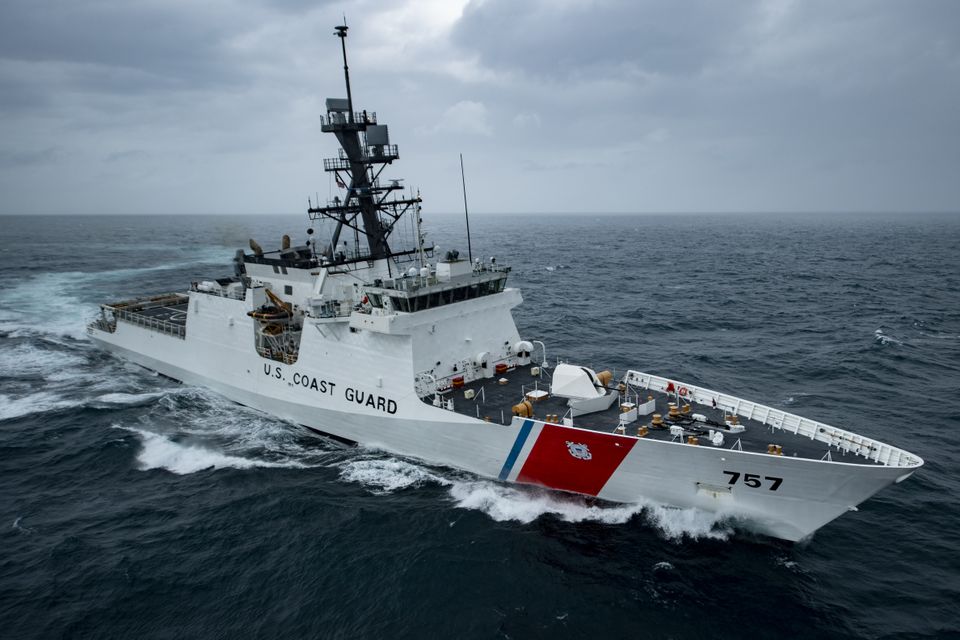 Marine Electric sank off the Delaware Bay putting most of its crew into the frigid seas. The inability of Coast Guard helicopters to rescue the Marine Electric victims from the water led Congress to pass legislation establishing the Rescue Swimmer School now located at Air Station Elizabeth City. Today, Air Station Elizabeth City hosts a fleet of C-130 aircraft, HH-60 helicopters, the Rescue Swimmer School, Aviation Technical Training Center and Aviation Logistics Center. District 5 also supports Air Station Atlantic City, which in turn provides an air detachment to the District of Columbia for aerial security in the National Capital Region.
Marine Electric sank off the Delaware Bay putting most of its crew into the frigid seas. The inability of Coast Guard helicopters to rescue the Marine Electric victims from the water led Congress to pass legislation establishing the Rescue Swimmer School now located at Air Station Elizabeth City. Today, Air Station Elizabeth City hosts a fleet of C-130 aircraft, HH-60 helicopters, the Rescue Swimmer School, Aviation Technical Training Center and Aviation Logistics Center. District 5 also supports Air Station Atlantic City, which in turn provides an air detachment to the District of Columbia for aerial security in the National Capital Region.
Many other Coast Guard firsts have been recorded in the Fifth District. In 1906, Revenue Cutter Apache began breaking ice in the Chesapeake Bay. The Apache was the first cutter fitted-out to break ice and tasked with that mission. Also, Captain Francis Saltus Van Boskerck, composer of the Coast Guard’s famous hymn “Semper Paratus,” commanded District 5 (then called the Norfolk District), from 1926 until his death of a heart attack two years later. And, many Coast Guard cutter namesakes have come from District 5, including World War I hero John Midgett, World War II heroes Glen Harris, Oliver Henry, Maurice Jester, and Daniel Tarr; famed Coast guard writer Alex Haley; famed Commandant Russell Waesche; and aviation pioneer Elmer Stone.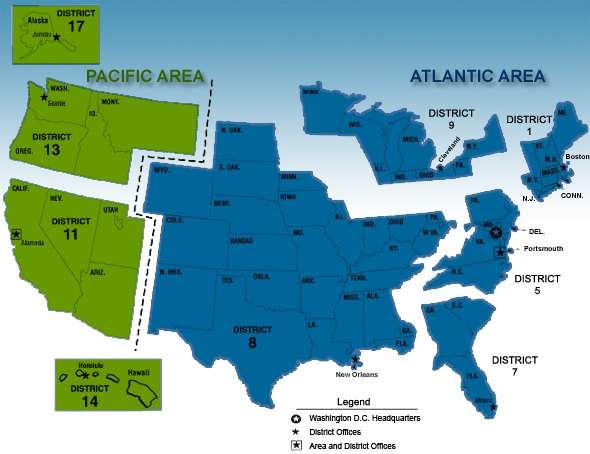
Today, District 5 is headquartered in Portsmouth, Virginia, and it boasts the nation’s largest concentration of active duty and retired Coast Guard members. It also hosts three headquarter units (Coast Guard, Atlantic Area, District 5); three Sectors (Delaware Bay, Virginia and North Carolina); Baltimore’s Coast Guard Yard; as well as air stations in Atlantic City and Elizabeth City, with the aviation detachment located in the National Capital Region. In addition, bases and stations located throughout the Fifth District host countless, medium-endurance cutters, patrol boats, buoy tenders and smaller watercraft.
Indeed, the Coast Guard’s history is closely tied to its Fifth District including the service’s founding, heroes and namesakes, and a legacy of historic firsts.